Tips For The Soccer Player In All Types Of Weather
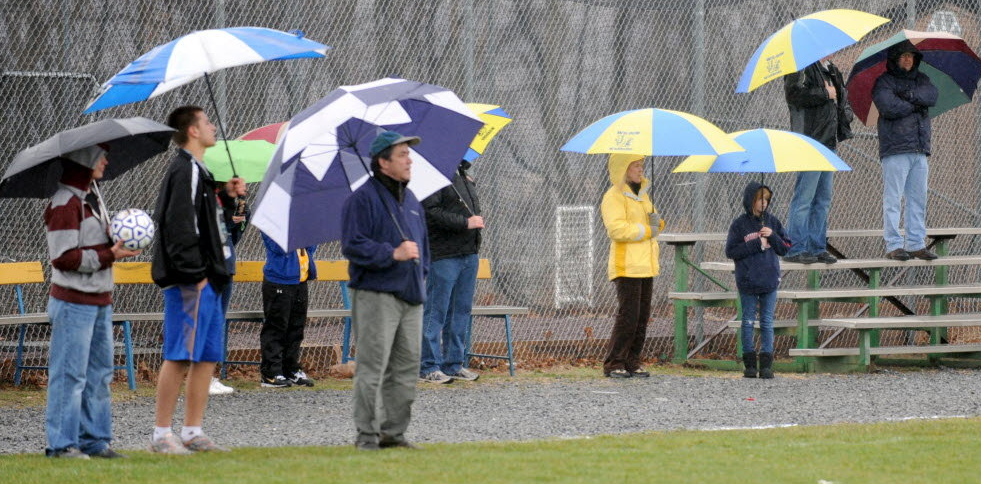
All Broken Arrow Soccer Club games are played outdoors. As a player, parent or coach you should be prepared to play in all weather conditions including cold, heat or rain. Below are some helpful tips!
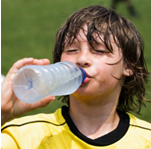
Here’s how to keep young athletes healthy and safe from heat-related illnesses. Here are five tips to help your athlete beat the heat and stay healthy this summer and fall:
Ensure acclimation
- This is a process that introduces an athlete to clothing, climate and the intensity/length of exercise over the course of 10 to 14 days. This allows athletes to adapt to new conditions and increase exercise tolerance in the heat.
Stay properly hydrated
- Athletes should drink 8 to 16 ounces of water one hour before exertion. During exertion, they should continue drinking every 15 to 20 minutes (an athlete weighing less than 90 pounds should drink 10 gulps for 5 ounces; more than 90 pounds, drink 20 gulps for 10 ounces). Also, for activities longer than 1 hour, add electrolytes (sports drink) or drinks/foods with salt.
Maintain good nutrition.
- A healthy diet is essential to boost energy levels, lower injury risk, speed muscle recovery and increase concentration.
Watch the weather and be flexible
- Be sure to keep an eye on the weather and limit activity when it’s very hot. Also, wear lightweight synthetic clothing when possible and provide cooling devices.
Be aware and prepared
- Sports provide immense benefits to our kids. With proper prevention and preparation, we can help keep them healthy, active and injury-free.
(Source: Alex B. Diamond, D.O., M.P.H., F.A.A.P., director of the Vanderbilt Program for Injury Prevention in Youth Sports.)

Wear Proper Clothing In Extreme Heat
Choose lightweight, light-colored, and breathable clothing.
Remember Hydration Starts the Day Before
When preparing for a long athletic competition or for a game that takes place on a very hot day, you need to prepare and start hydrating your child at least 24 hours before the match. Even if you bring lots of fluids to the soccer game, if your child arrived dehydrated, it will be very difficult for him to perform at his best.
Starting the day before, make sure that your child is drinking plenty of fluids, especially water. The most important parts of the day to hydrate are before going to bed and immediately after waking up, because most fluid loss occurs while you’re sleeping.
Bring Appropriate Drinks to the Game
Not every drink will be the right way to keep your kid hydrated. The best drink is water. This will keep your kid well hydrated, but will not slow or bog them down during a game. If the weather is very hot or if the game is longer than 30 minutes, sports drinks may be an even better choice. The electrolytes will help your child feel refreshed, hydrated, and will prevent muscle fatigue.
Take Sips Early and Often
If your child doesn’t drink any fluids during the course of the game, there is a very good chance that he or she will get dehydrated. Instead, you should encourage your child to take drinks during breaks in play, ends of periods, and halftime. Drinking a lot at once may make it harder for them to perform and run at their best, but a few sips will keep them hydrated without slowing them down.
Watch for Signs of Dehydration
There are many signs of dehydration, and once you suspect a child is dehydrated, you should get them water and fluids as soon as possible. Common signs of dehydration are dry mouth, headaches, dizziness, and muscle cramps. If you think a child is dehydrated, you shouldn’t risk their health. Sit the child out and get them the fluids that their body needs.
Don’t Wait Until They’re Thirsty
Some parents wait until the child says he or she is thirsty before offering a drink of water. Instead, you should encourage the children to drink water even before they are feeling thirsty. The feeling of thirst is your body’s response when you are already dehydrated, and if you kid is feeling thirsty, that means you are already too late. Encourage frequent sips of water or sport drinks through the game or practice, and this will prevent your child from feeling thirsty.
Postgame Hydration
The most important hydration period is the first 20 minutes after athletic activity. This is when your body needs water the most, so make sure you have drinks ready once the game is finished.
COLD WEATHER TIPS
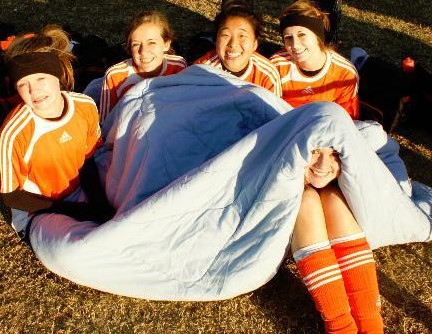
-
Always start with a light activity before stretching
-
Dynamic stretching (exercises that stretch muscles in the course of other activities) may be more effective than static stretching
-
Static stretching should be performed in short increments separated with activities to keep the body moving
-
Keep stretching throughout the activity – cold muscles tighten up quickly, so any resting activity should include some stretching
-
Dress in layers; from the skin out:
-
Compression garments
-
Uniform
-
Warm-ups/Sweats
-
Gloves
-
Jacket/Outerwear
-
-
Removing layers
-
Keep the warm-ups on until the body is almost sweating
-
Keep the core/trunk of the body warm, so pants go before tops
-
At least put the warm-up jacket back on at each rest period longer than a few minutes; the body cools quickly
-
-
Good additions
-
Beanies/knit caps are a great way to add heat; the head loses more heat than any other part of the body, especially for short hair or pony tails
-
Gloves can make a big difference; keep the extremities warm and the whole body is more comfortable
-
Additional socks – in wet weather, replacing wet socks for dry at half-time or at a break can make a world of difference in a players comfort
-
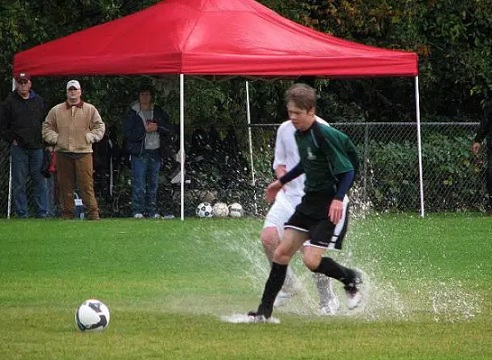
SPECIFIC CONDITIONS
-
Wet weather
-
Replace wet gear with dry when possible, but always keep something dry for the ride home
-
-
Frosty
-
Keep the hat and gloves on even when the body starts to warm up, it protects the skin from frostbite
-
Plan ahead for the entire practice/game, not just the first few minutes; better to be uncomfortable for a short time and healthy afterwards
-
Better to be smart (in what you wear) than to look good.
-
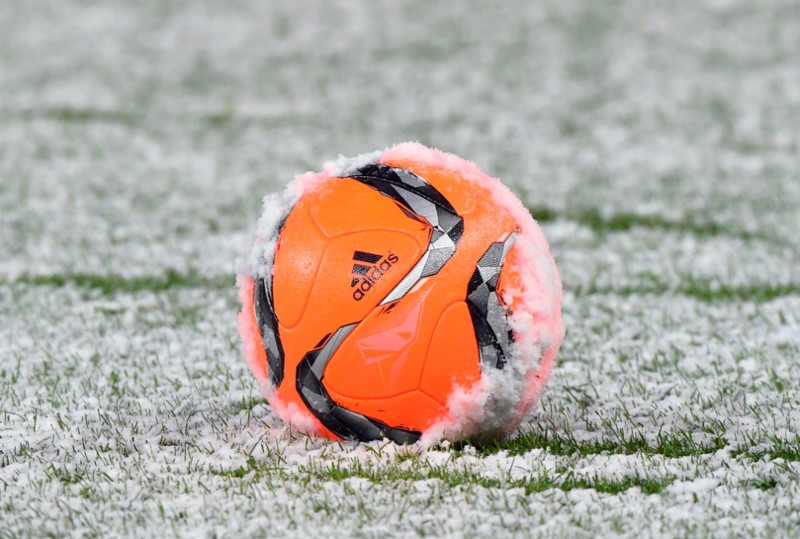
-
It is at least as important to cool down slowly in cold conditions as it is in the heat
-
Dynamic stretching and light activity will help in recovery
-
Put layers back on before you think they are needed
-
Always drink before you are thirsty
-
Drink warm water to add heat, overly hot drinks will cause the body to rollercoaster
-
Remember that your clothes are soaking up sweat, so you need more fluid than you think
-
According to official rules, the color of anything worn under the uniform should match the adjacent part of the uniform. (Most Referees will allow black or white, but if you have on the same color as the opposing team, you may have to remove that piece of clothing before playing.)
-
Zippers, drawstrings, or anything that could cause injury to player are not permitted
-
Gloves with some level of grip is helpful when you do a throw in.

LIGHTNING DETECTION SYSTEM
The only official BASC policy on weather is in regards to lightning detection. See our inclement weather link or check the bascok.com homepage for our field status. You can also sign up for text alerts concerning ISSC field closures. BASC does maintain a policy that player safety is a top priority. If during a game, the Thorguard Lightning Detection system goes off, we ask coaches, players, parents, refs and other bystanders to exit the field immediately and take shelter in a vehicle or enclosed building. Do not wait under a tree, tent, pavilion or umbrella.
Here is how the Thorguard Lightning Detection system works: https://bascok.demosphere-secure.com/_files/coaches/coaches-corner/BASC%20Inclement%20Weather%20Policy_2017.pdf.






